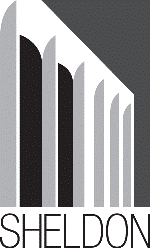Fine and Performing Arts, Hixson-Lied College of

Sheldon Museum of Art: Catalogs and Publications
Date of this Version
2011
Citation
Sheldon Museum of Art, October 8, 2010- January 2, 2011
Abstract
New Material World: Rethreading Technology highlights ten contemporary textile artists from Canada, Denmark, Japan, South Korea, and the United States, who engage modern technology either by employing or studiously resisting it in their work. The exhibition explores ways in which some artists utilize technology as a tool to expand their design capabilities and others use it to further their cultural, political, scientific, or social interests. Technology aids in planning and implementing artwork, allowing artists more time to explore new creative ventures. Modern exchanges of information facilitate collaborations between artists and industry. Although technology has benefited many textile artists, others find new meaning in the materials they choose. The use of non-traditional mediums such as combs, stainless steel, paper, and wood have led to innovative new designs.
Some artists use technology as a means to production and design, and others consider their choice and use of material inherently antithetical to technological advancement.
This tension between handcrafting and modern machinery has historical precedents, perhaps most famously in the Art and Crafts movement of the midto- late 19th century. During this period in Great Britain, designer William Morris and art critic John Ruskin opposed industrialization and its perceived ills-the alienation of the worker and shoddy mass-productionand envisioned a utopian society of communal laborers dedicated to handcrafting. According to artist Jessica Smith, with today's digital capabilities, we are at similar crossroads.
Smith's work invites the viewer to consider the connection between innovation and tradition. She uses chemically enhanced pigments and industrial woven cloth to articulate historical textile patterns. Her installations combine hand-printed wall coverings and Jacquard-woven upholstery with digitally-printed ceramics. For New Material World, Smith has recreated a 19th-century domestic interior. Here, she draws from 17th-century fabrics that were woven in England and France, but visually inspired by Asian imports such as Chinese porcelains, Indian textiles, and Japanese lacquers. Domestic textiles such as these have communicated both actual and aspiring social status, as well as gender and ethnicity throughout history. Tying the handcrafting versus technology debate with taste and class, Smith is interested in how textiles can transcend historical boundaries.


Comments
All images are copyright by the original artists. Publication copyright 2011 The Regents of the University of Nebraska